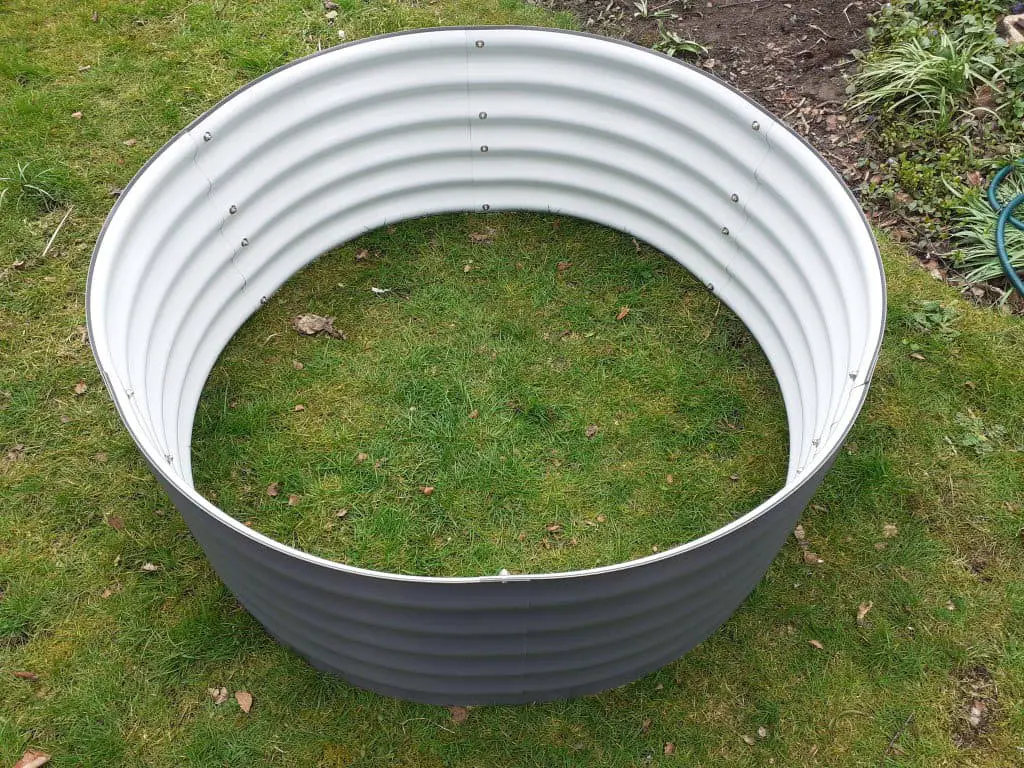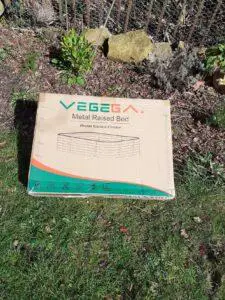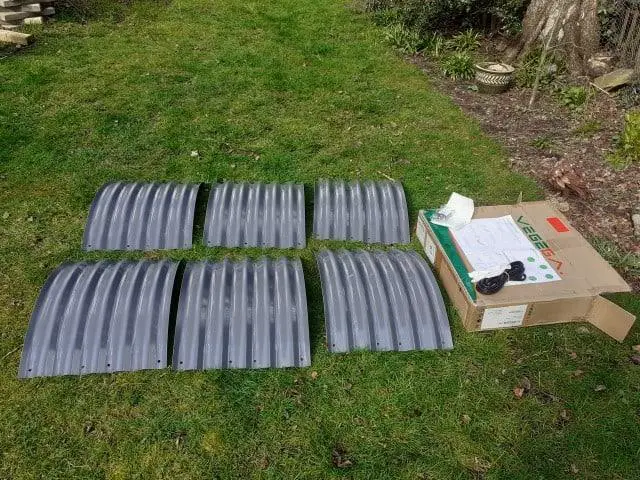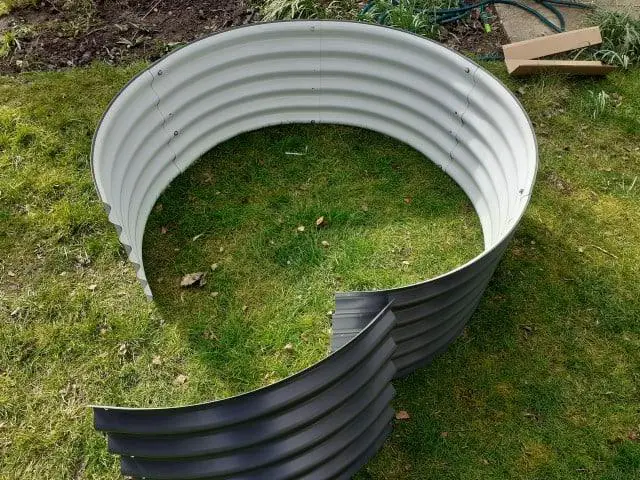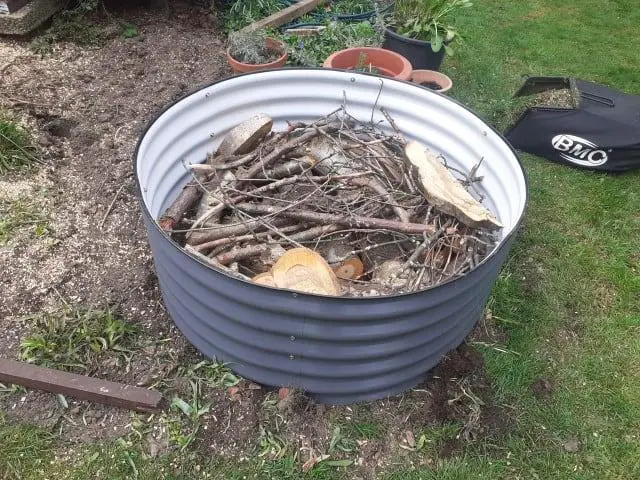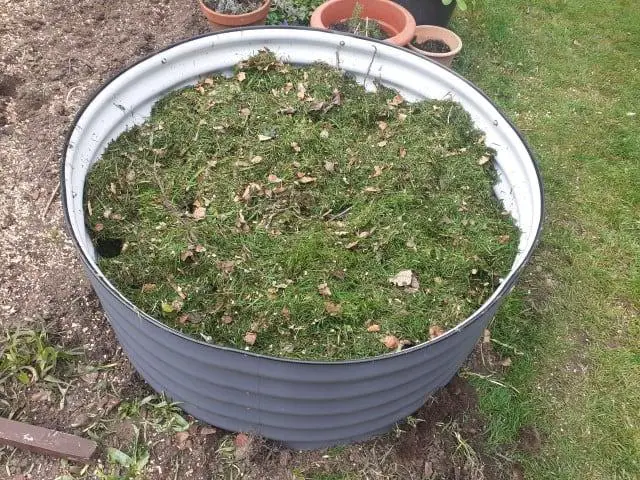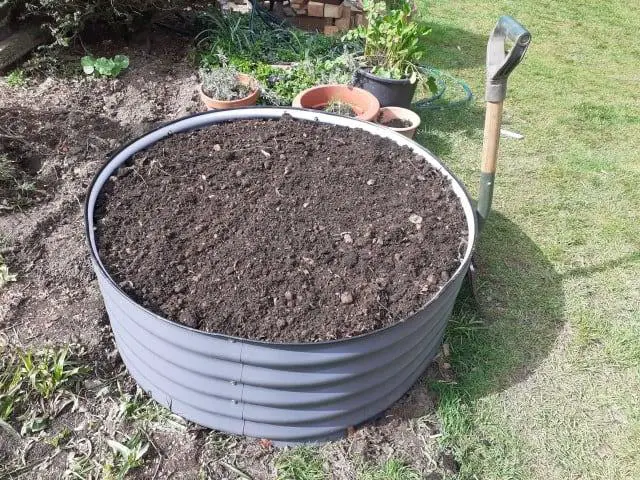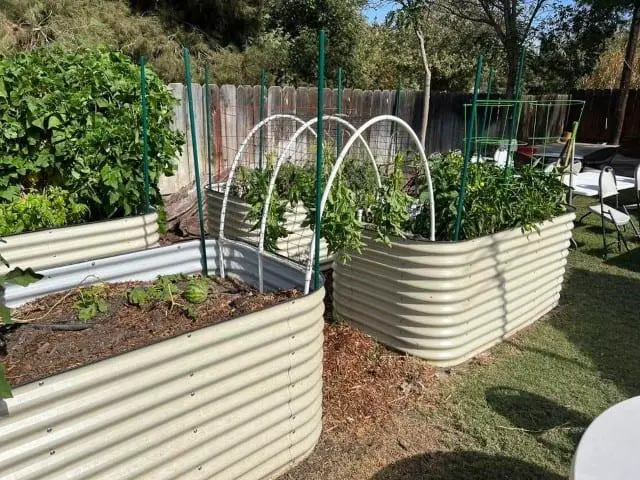When it comes to setting up a DIY Raised Garden Bed, there are a number of choices you can make – even after you have chosen your ‘Bed’ material, be it metal, timber, brick or even straw bales!
For this post I shall use the example of a currugated steel Raised Bed, and more specifically the circular steel Bed by ‘Vegega ‘. These come in a number of shapes and sizes including square or rectangular, and being modular in design can be made into several different shapes.
‘. These come in a number of shapes and sizes including square or rectangular, and being modular in design can be made into several different shapes.
Now to be fair, this is a modular steel Bed that only has to be assembled (this took me only 15-20 minutes to put together). The other option is to gather some corrugated steel sheets together, head for the workshop, and spend perhaps many hours assembling something for your own needs – granted, this may be a lot more difficult if you are choosing a circular design like this example!
Unpacking The Vegega DIY Raised Garden Bed
Personally I was surprised at just how compact this package was when it was delivered. The box only measured approx 24 inches by 18 inches and 6 inches or so deep. This was for a circular bed 42″ diameter and 17″ deep overall.
Along with simple instructions and a pair of assembly gloves, the package came in 6 pieces of corrugated metal for the sides. 1/2″ nuts and bolts for assembly (includes a good sturdy spanner tool) and a strong plastic trim to put around the top edge.
Building The Raised Bed
This was a very simple matter of assembling the pieces and lining up the holes on the sides to fit the nuts & bolts provided – along with the simple tools needed. Do not overtighten as you are assembling the structure. Once you have all the fittings finger-tight and assembled this is the best time to go over and tighten the bolts.
Once the bed is assembled then you can simply press down the plastic edging strip all around the edge of the bed. Carefully trim away any excess trim.
That’s it – your Metal Raised Garden Bed is assembled and ready to fill.
Filling The Raised Bed
There are a number of solutions for filling any Raised Bed, whether it is a circular construction as in this one, or indeed any deep garden bed.
For this particular bed I have chosen a version of the ‘Hugelkultur’ method – mainly because I have access to a lot of wood cuttings for free! You can find lots more on the actual Hugelkultur method on this post.
First of all I started by recycling the cardboard packaging by covering the base of the bed. This has the dual purpose of encouraging worms (they love cardboard for some reason), and restricting weed growth.
After this I threw in a load of timber cuttings starting with the larger timbers at the bottom and reducing down to twigs as it built up – similar to the way that a Hugelkultur raised garden bed is constructed, only in this case it is confined within the metal bed structure. After I reached about 2/3rds of the way I threw in a load of crass clippings and other ‘green’ material then topped it off with about 8 inches of a mix of good topsoil and compost material.
As for the depth of the topsoil – this is largely determined by what vegetables you want to grow in the bed. For ecample if you are planning to grow deep tap-root vegetables such as carrot or parsnip, then I would be sure to have at least 12 inches of topsoil for the root to develop – and up to 18 inches for parsnips.
For most vegetable types however, even 6 inches of soil will be ample for most of the popular veggies like beets, cabbage, cauliflower, onions, shallots, and most herbs.
Vegetables To Grow in a Raised Bed Garden
Shallow rooted plants such as cabbage, peppers, onions, cauliflower, peas, beans, spinach, beetroot, turnip, and a host of great vegetables – will grow well in only 6-8 inches of topsoil. Particulary in the case of peas & beans, it is a simple matter to add a framework to the bed to support any climbing plants or plants that need support.
In short. There is nothing that you can grow in a traditional garden that you cannot grow in a Raised Bed Garden. In fact, since a Raised Garden bed such as this one can be easilly covered by polythene or garden fleece, it actually adds to the choice of vegetables that you can grow in it. This applies to all shapes and sizes of Raised Garden Beds.
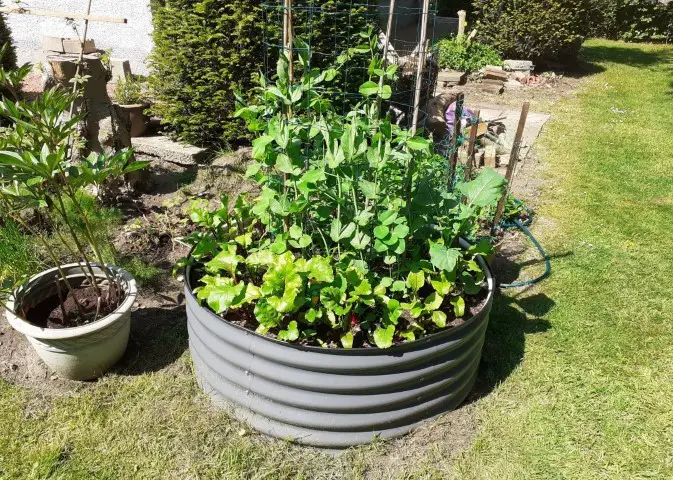
Conclusion:
So there you have it – Constructing a raised garden bed by Vegega, could hardly be made more simple. There are many styles available and all are the same simple construction method with variations due to the modular nature of the Raised Beds themselves.
If you are looking for a good quality metal bed that will last in excess of 20 years, then Vegega certainly has the goods – As for this particular project…check back in a few weeks when hopefully something will be growing in it!
FAQ’s Raised Metal Garden Beds
- Are metal raised garden beds long-lasting?
- Yes, metal raised garden beds, particularly those made from materials like galvanized steel or Aludized steel like the Vegega brand
 , are known for their durability. They resist rust and corrosion, providing a long-lasting, easy maintenance solution for your garden.
, are known for their durability. They resist rust and corrosion, providing a long-lasting, easy maintenance solution for your garden.
- Yes, metal raised garden beds, particularly those made from materials like galvanized steel or Aludized steel like the Vegega brand
- Do metal garden beds get too hot in the sun?
- While metal can absorb heat, raised garden beds made from materials like galvanized steel are designed to dissipate heat quickly. Proper placement and occasional shading can help regulate soil temperature for optimal plant growth.
- How do I prevent rust on my metal garden bed?
- Most metal garden beds are treated to resist rust. However, over time, some may develop surface rust. Regular cleaning, applying a rust-resistant coating, and avoiding prolonged exposure to moisture can help prevent and manage rust.
- Can I use a metal raised bed for organic gardening?
- Yes, metal raised beds can be used for organic gardening. Choose metal beds made from materials that are free from harmful coatings or chemicals. Consider lining the bed with a barrier to prevent direct contact between the soil and metal if you have concerns.
- Are metal raised beds easy to assemble?
- Yes, metal raised garden beds are generally easy to assemble. Many come with pre-drilled holes and straightforward instructions. A simple toolkit is often sufficient for assembly, making it a convenient option for gardeners of various skill levels.
Like to know more? Check out VEGEGA Raised Garden Beds for yourself.
for yourself.

